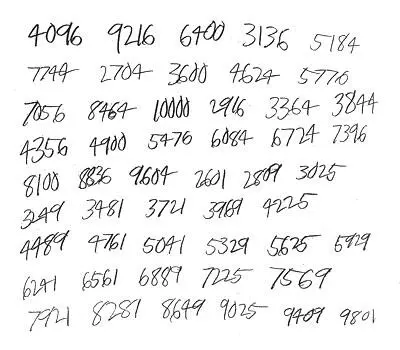Clara Park - Exiting Nirvana
Здесь есть возможность читать онлайн «Clara Park - Exiting Nirvana» весь текст электронной книги совершенно бесплатно (целиком полную версию без сокращений). В некоторых случаях можно слушать аудио, скачать через торрент в формате fb2 и присутствует краткое содержание. ISBN: , Жанр: Психология, на английском языке. Описание произведения, (предисловие) а так же отзывы посетителей доступны на портале библиотеки ЛибКат.
- Название:Exiting Nirvana
- Автор:
- Жанр:
- Год:неизвестен
- ISBN:0-316-69117-8
- Рейтинг книги:4 / 5. Голосов: 1
-
Избранное:Добавить в избранное
- Отзывы:
-
Ваша оценка:
- 80
- 1
- 2
- 3
- 4
- 5
Exiting Nirvana: краткое содержание, описание и аннотация
Предлагаем к чтению аннотацию, описание, краткое содержание или предисловие (зависит от того, что написал сам автор книги «Exiting Nirvana»). Если вы не нашли необходимую информацию о книге — напишите в комментариях, мы постараемся отыскать её.
All illustrations are by Jessy Park.
Exiting Nirvana — читать онлайн бесплатно полную книгу (весь текст) целиком
Ниже представлен текст книги, разбитый по страницам. Система сохранения места последней прочитанной страницы, позволяет с удобством читать онлайн бесплатно книгу «Exiting Nirvana», без необходимости каждый раз заново искать на чём Вы остановились. Поставьте закладку, и сможете в любой момент перейти на страницу, на которой закончили чтение.
Интервал:
Закладка:
Other sheets explored the factors of 13041 and 19380. Fractions too could be factored: 1 1/2 is divisible by 1/100, 1/50, 3/100, 1/20, 3/50, 1/10, 3/20, 1/4, 1/2, 3/4, 1 1/2. Though numbers were generally a solitary pastime, now and then we looked over them together. Jessy had written 2, 2, 2, 3, 5, 5, 7, 7. «If you multiply together you get 29400», she told me. On another sheet appeared 678586773483121410. When her father remarked it was not a prime, Jessy explained that it was «lots of primes multiplied together». Other numerical pastimes were less challenging. Jessy was happy counting to 10, 000 by 100’s, to 15, 000 by 150 s. Not very interesting, perhaps, but very autistic. Years later we met an Australian boy, far more advanced than Jessy, who spent his free time counting to a million, and I have seen sheets of primes and multiplications by Joseph Sullivan, one of the models for the Dustin Hoffman character in the movie Rain Man, that could easily be taken for Jessy’s.
I can follow Jessy’s math up to a point; primes and cubes and prime factors are not in fact all that complicated. But I know my limits. I quote again from Ron Ellis and Lola Bogyo, glad to reiterate what we owe to them and to all those who accompanied Jessy beyond what we could manage. «Many hands make light work» is one of Jessy’s favorite proverbs.
By age 13 she could list, on request, all the prime numbers from 1 to 1000 and beyond…. Two prime integers.. stood out among the rest: 7.. and 3… [Jessy] endlessly explored the composites and combinations of these numbers. She discovered, among many other things, that the delightful formal symmetry of the integer 10, 001 could be generated unexpectedly by multiplying 73 X 137. This formal symmetry was used to produce integers possessing a duplicating structure, as in the following examples:
10001 X 137 = 1370137
10001 X 7003 = 70037003
10001 x 7337 = 73377337
[Jessy] correctly inferred that she could generate formal duplication without directly using the integer 10001 but by embedding its factors in her calculations:
37 x 37 = 1369
1369 X 73 = 99937
99937 X 137 = 13691369 (formal duplication)
[Jessy] also found that she could encrypt selected integers within her duplicating structures by the formation of composites and then retrieve the original digits in a delight-fully altered form by further manipulations:
13691369 X 53 = 725642557 (5? is encrypted) 725642557 -5-37= 19611961 (a formal duplication)
19611961 37 = 530053 (53 appears in duplicate!)
Wherever there were patterns, however complex or subtle, [Jessy] discovered them; wherever instances adhered to some underlying rule, that rule was induced. She explored her world of numbers until it had become predictable and ordered. [24] Bogyo and Ellis, op. cit., pp. 269–270. For more on Jessy’s numbers, see Park and Youderian, „Light and Number“.

It took a mathematician to unravel the system behind this series of numbers Jessy produced at age twelve.
That was impressive enough. But it took our friend Freeman Dyson of the Institute for Advanced Study in Princeton to recognize Jessy’s most remarkable feat. The summer she turned twelve, Jessy produced sheet after sheet bearing the same strange series of fifty four-digit numbers. Or was it a series? It didn’t look like one. There is no obvious relation between 4096, 9216, 6400, and 5184. Only a mathematician’s eye would recognize that Jessy had arranged the squares of the numbers from 51 to 100 according to the number of powers of 2 they contain. 4096 is 64 2or 2 12; it is made of nothing but 2’s. 9216 is 96 2; 96 is 3 X 32, 32 is 2 5, and so on. The odd numbers, beginning with 2601, which is the square of 51, complete the list. (And since many hands do make work lighter, it is Jessy’s father who deserves the credit for the wording of this explanation.)
To certain minds the language of mathematics is particularly attractive for its abstraction, for the beauty of pure idea, independent of human waywardness. And certainly that was one reason Jessy liked math. Yet the explanation is too simple, for as with clocks, many of Jessy’s numbers had strong linkages to the world. Some of these were emotionally neutral. Back home three of the Jessy-friends were counting calories; she recorded their weights (111, 126, and 140) and multiplied them together for the impressive total. She factored numbers derived from the number of times her superball bounced on a given day. But many were emotionally charged; like clouds and sunshine they could bring misery or delight. We had never noticed that telephone poles are numbered, but Jessy had. If she missed one there were mumbles, or worse. As once with washcloths, Jessy could be desolated by the incomplete.
SOMEBODY ATE A PIECE OF THE SALAD
ONLY 399 PIECES IN A BOWL
I HAVE A COLD
7256425570 = 52/7 X 1372837270
I CRIED WHEN SOMEBODY ATE A PIECE OF THE SALAD
Though Jessy had typed answers to Megan’s questions, these words, carefully printed in capitals, were almost her first spontaneous written communication. She was twelve. Every statement but the second was literally true, yet together they seemed meaningless. But they were not meaningless to Jessy. She had cried, she had shrieked. Then, alone in her room, she had expressed her anguish in words, and in numbers as bewildering as the cause of her distress. It was hard to forget that timeless wailing and remember her delight in the discovery that 70003 is a primer Yet we had learned that numerical desolations, like others, were temporary. Later that year Jessy, having noted that 2730 was a HATE number, recorded its factors, as she had done in the past: 1, 2, 3, 5, 6, 7, 10, 13, 14, 15, 21, 26, 30, 35, 39, 42, 65, 70, 78, 91, 105, 130, 182, 195, 210, 273, 390, 455, 546, 910, 1365, 2730. But this time she added a comment: ITS CHANGED TO GOOD. And suddenly time rolled backward; I realized why, three years earlier, not yet able to write, she’d drawn so many chains. As words and numbers connected, another window opened on that strange inner world.
All that was long, long ago. Jessy’s math, though as accurate as ever, is now ordinary, real-world stuff, useful for balancing a checkbook or making out a tax form; fractional conversions are handy for baking. There are no more HATE numbers, and she has forgotten many of the primes and prime factors that she used to whisper because they were «too good». Numbers, like others of her obsessions, have, in her own phrase, «worn away», as she has entered more and more fully into the normal world of the everyday. And that itself is normal. How many of us leave an interest behind, or a skill, as the piano stands unopened or the sketchbooks gather dust?
And yet — how much there is in Jessy’s mind we don’t know about! A year ago her father and I were wondering why our home phone gave a continual busy signal; was it out of order? Jessy picked up on our conversation. (That itself is something she never used to do.) Unexpectedly she informed us that the out-of- order signal was like the busy signal but with 120 beeps per minute instead of 60. Now who knew that?
But counting may be only a habit when you’ve done it all your life. There are other indications that numbers persist, no longer emotion-filled, no longer secret, but underground. This year I notice that her social security number ends in 1421; I mention that (obviously) it’s divisible by 7. It’s even more obvious to Jessy; «Divisible by 7 2», she says. I recall another instance. Jessy had written 1875 in one of her old books and I asked her if she remembered anything about it. Though it was half her lifetime past, her answer was immediate. «Has a 3 in it. And 5V». And indeed, divide it by 3 and you get 625: 5 X 5 X 5 X 5! It’s no great surprise, then, to find she’s factored the year of her birth: 1958 is 2 X 979. «979», she says, «is definitely a prime».
Читать дальшеИнтервал:
Закладка:
Похожие книги на «Exiting Nirvana»
Представляем Вашему вниманию похожие книги на «Exiting Nirvana» списком для выбора. Мы отобрали схожую по названию и смыслу литературу в надежде предоставить читателям больше вариантов отыскать новые, интересные, ещё непрочитанные произведения.
Обсуждение, отзывы о книге «Exiting Nirvana» и просто собственные мнения читателей. Оставьте ваши комментарии, напишите, что Вы думаете о произведении, его смысле или главных героях. Укажите что конкретно понравилось, а что нет, и почему Вы так считаете.



![Майкл Азеррад - Come as you are - история Nirvana, рассказанная Куртом Кобейном и записанная Майклом Азеррадом [litres]](/books/392533/majkl-azerrad-come-as-you-are-istoriya-nirvana-ra-thumb.webp)



![Эверетт Тру - Nirvana - Правдивая история [litres]](/books/399241/everett-tru-nirvana-pravdivaya-istoriya-litres-thumb.webp)




